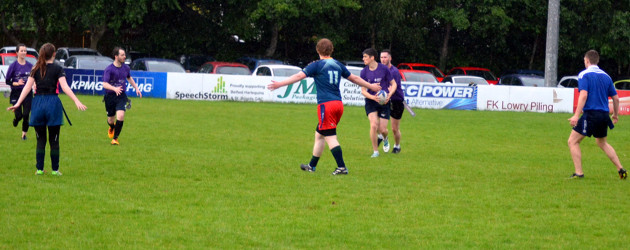We though we would get into the Halloween spirit with this feature and use a few traditional Halloween images to catch ur attention and re-iterate the superb information below. It is worth looking at and after getting the treatment ourselves we can thoroughly recommend it. Also, we hoep you have a lovely Halloween!
The shoulder is a very common area to sustain injury on the rugby pitch, especially for those playing in the front row.
The injury sustained may be acute such as an awkward tackle or perhaps collapsing in the scrum. These are more often the injuries that will actually stop play for a period of time. However the injury may also be from repetitive strain – it may not feel bad enough to prevent play but there can be nagging aches and pains, from a series of knocks. In many cases though this can be just as detrimental as players may try to avoid excessive contact or may not feel they can tackle as well for fear of further injury.
The shoulder is a 4 joint complex therefore injury to one will affect all. The most common area to become strained however is the AC (Acromio – clavicular) joint which connects the shoulder blade and collar bone together. The joint may be small but injury can be significant and if severe enough could event warrant surgical repair. The brachial plexus (Nerve bundle supplying the arm) also runs very nearby and may be damaged resulting in muscle weakness, pins and needles and pain down the arm.


The rotator cuff is also commonly damaged – These are a group of muscles designed to help stabalise and initiate movement within the shoulder. The four muscles are supraspinatous, infraspinatous, teres minor and subscapularis. The shoulder is a very mobile joint but as such it sacrifices its stability. Unfortunately, because of the shallowness of the shoulder socket, the shoulder joint is one that is most prone to injury from sports and falls. If one of the rotator cuff tendons is partially torn, pain and restricted movement result. If there is a complete tear, the muscle supported by the affected tendon can affect shoulder movement and cause muscle pain and weakness.
When a rotator cuff injury is serious enough that it irritates the nerves that pass through the shoulder joint, this is known as rotator cuff impingement. Impingement can produce tingling sensations and numbness down to the hand and fingers, in addition to pain.

When training it is important to work all the different areas of the shoulder to ensure the function efficiently. If you focus too much on one area, eg biceps too much relative to triceps, this will create a muscle imbalance therefore predisposing to injury.
If an injury does occur, whether acute traumatic or chronic through repetitive strain it is best to get it dealt with ASAP. As your body compensates and adapts to the strain secondary areas will become involved including neck and mid back. Your body is designed to work as a whole unit and if one area doesn’t work well everywhere else has to work harder.
Also with many injuries there can be a fear element of causing more damage- It is vital to address this as playing but trying to save the shoulder will never work on a rugby pitch and then the opposition is more likely to triumph, and you are likely to re injure the area. (I have seen some v weak tackles on the pitch in order to protect an old injury!) A shoulder injury is very easy to spot – don’t allow the other team to take advantage!
If you would like to hear more please do not hesitate to contact me at Pringle Chiropractic on 02890 202003 or alternatively check out our website www.pringle-chiropractic.co.uk – CLICK HERE –






